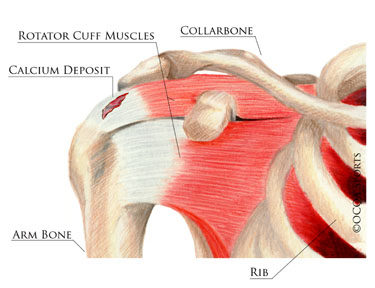Calcific Tendinitis
Calcific tendinitis of the shoulder occurs when a calcium deposit develops in the rotator cuff muscles. The rotator cuff is a group of muscles that originates on the shoulder blade (the scapula) and inserts in the top of the arm bone (the humerus).
The function of the rotator cuff is to move the shoulder. Often, the rotator cuff is inflamed and torn in people with painful shoulders. Occasionally, the rotator cuff is not torn; instead, a deposit of calcium in the rotator cuff muscle develops. The deposit produces significant pain and irritation in the rotator cuff.
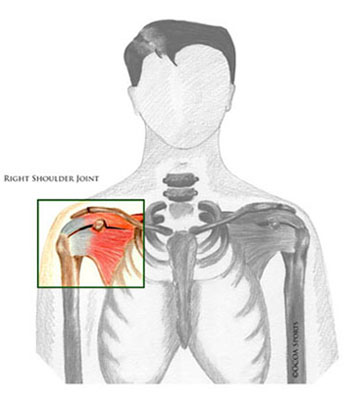
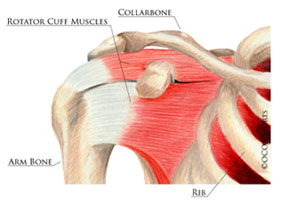
The Rotator Cuff
The calcium deposit comes about slowly over time. Often, there is a small injury or strain to the rotator cuff causing local inflammation in the shoulder. In certain patients, the body responds by depositing calcium at the site of inflammation. Often, patients have deposited calcium in the rotator cuff muscle for a long period of time prior to actually experiencing pain from the calcium deposit.
The Rotator Cuff with a deposit of calcium in the tendon
What Causes Calcific Tendinitis?
The calcium deposit comes about slowly over time. Often, there is a small injury or strain to the rotator cuff causing local inflammation in the shoulder. In certain patients, the body responds by depositing calcium at the site of inflammation. Often, patients have deposited calcium in the rotator cuff muscle for a long period of time prior to actually experiencing pain from the calcium deposit.
Typically, patients begin to complain of pain in the shoulder after they perform a lot of activity with that specific shoulder or “overdo it.” Sometimes patients have such severe pain that they are not even willing to move their arm because of the intensity of their pain.
To evaluate for calcific tendinitis, a doctor will examine the patient after a history is taken. X-rays are performed to image the shoulder. In patients with calcific tendonitis, the X-rays will show a calcium deposit in the location of the rotator cuff muscle. To further evaluate the rotator cuff muscles, an MRI may be ordered. The MRI will show muscles and tendons around the shoulder that are not visible on the X-ray.
Treatment for Calcific Tendinitis.
The treatment for calcific tendinitis includes anti-inflammatory medicines, injections of cortisone into the shoulder, and possibly surgery. Often a cortisone shot into the shoulder can quickly relieve the intense pain associated with calcific tendonitis. The shot, however, does not remove the calcium or cure the problem. It merely decreases pain and local inflammation from the calcium deposit. Surgery is usually recommended only after pills, shots, and physical therapy fail to control the pain.
If surgery is recommended, it is usually performed arthroscopically. Arthroscopic surgery uses small incisions and small tools, about the size of a pencil, to perform the procedure. All the work is visualized with a small camera, the arthroscope. The surgeon sees inside the shoulder with the arthroscope and its images are projected on a video screen.
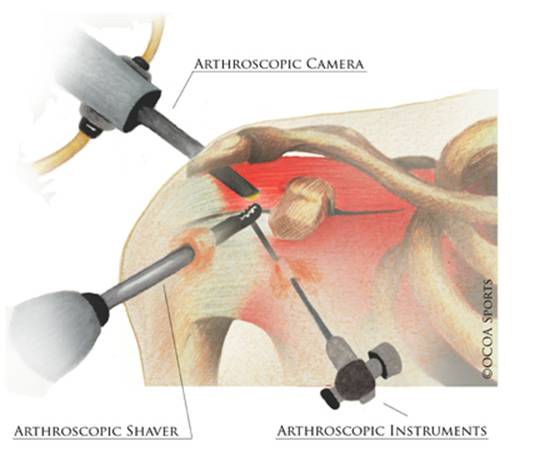
Arthroscopic camera and tools in the shoulder
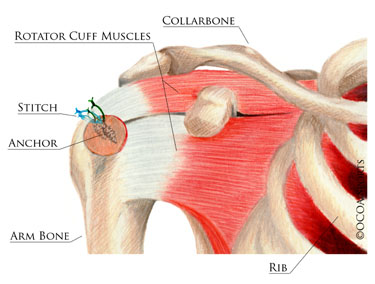
The rotator cuff is repaired back to its normal position
Sometimes, during the process of removing the calcific deposit in the rotator cuff, a defect is left in the rotator cuff muscle and a rotator cuff repair is required. If necessary, the rotator cuff repair is done at the same time as removal of the calcific deposit. Depending on the size and location of the tear, anchors may or may not be needed. Once the calcium deposit is removed from the rotator cuff, pain from calcific tendonitis is expected to resolve.
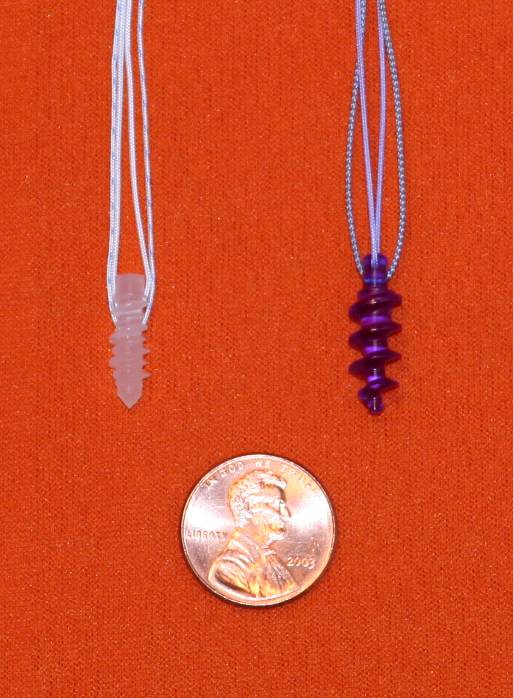
Examples of absorbable anchors with attached sutures (stitches) used to reattach torn tissue to bone
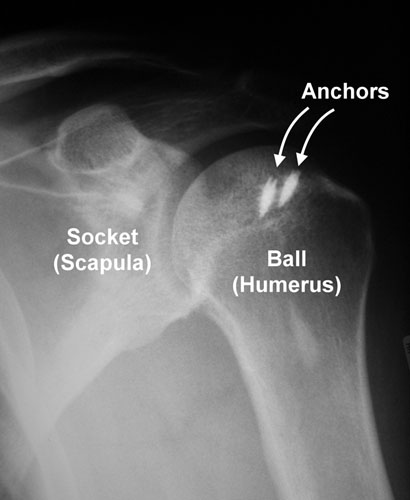
Shoulder X-ray showing anchors in bone for rotator cuff repair
During surgery, patients are asleep and do not remember the procedure. According to the Anesthesia Manual of Surgical Procedures, pain from calcific tendonitis and rotator cuff surgery is rated at 6 out of 10 on a scale of 1 to 10, with 1 being no pain and 10 being the worst pain. Pain medication is given to control pain and keep patients comfortable after surgery. Pain predictably improves after surgery, especially after the first week.
What to Expect after Calcific Tendonitis Surgery.
Your doctor may prescribe a sling after surgery. If so, you will probably wake up from surgery with the sling on. Recovery after calcific tendonitis surgery is gradual. Patients usually take one to two weeks off from work. Physical therapy may be required for a proper recovery, usually for several months. Activity restrictions will apply after surgery until appropriate rehabilitation goals have been achieved.
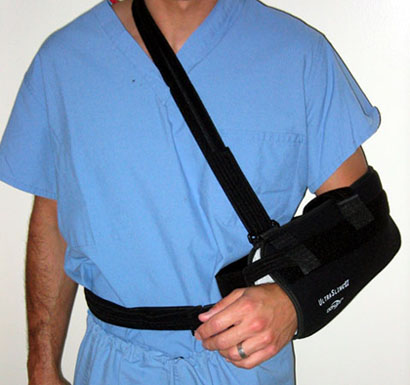
If you’re suffering from orthopedic pain, whether or not it’s caused by Calcific Tendinitis, contact the doctors at Orlin & Cohen, the leading Long Island orthopedic practice. Immediate appointments are available: Schedule yours now.



